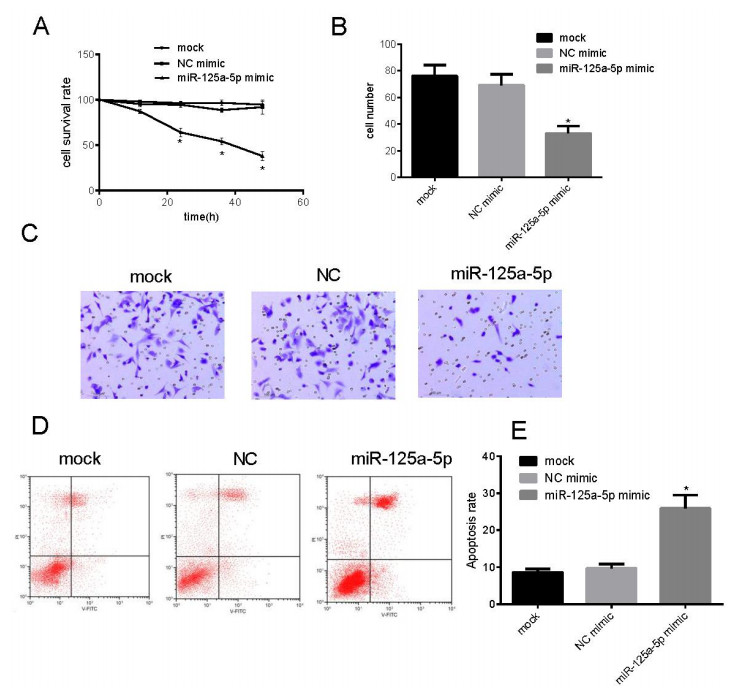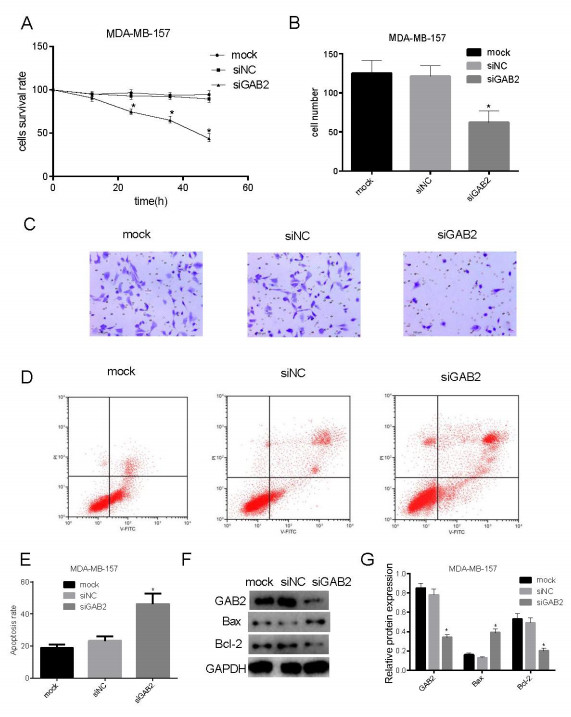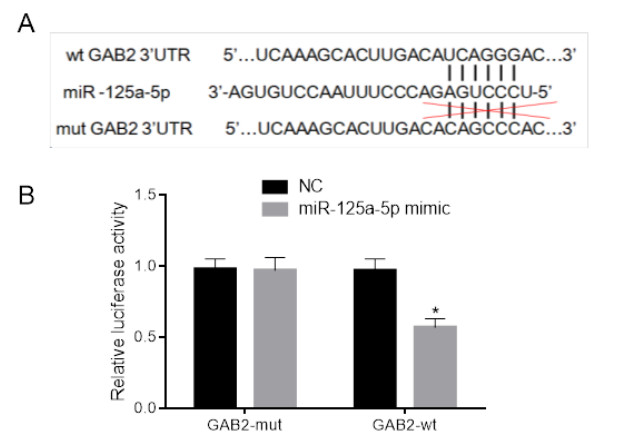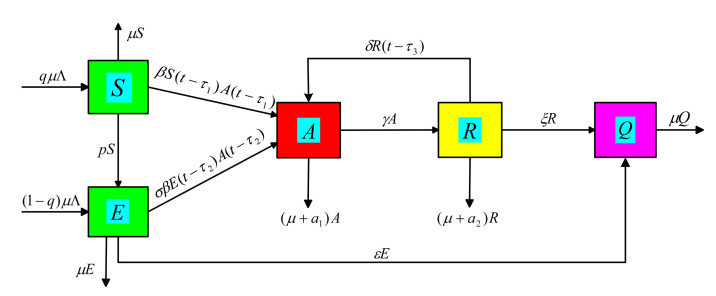|
[1]
|
F. Sˊanchez, X. Wang, C. Castillo-Chávez, D. M. Gorman, P. J. Gruenewald, Drinking as an epidemic: a simple mathematical model with recovery and relapse, Therapists Guide to Evidence-Based Relapse Prevention, Academic Press, Burlington, (2007), 353–368.
|
|
[2]
|
J. Rehm, C. Mathers, S. Popova, M. Thavorncharoensap, Y. Teerawattananon, J. Patra, Global burden of disease and injury and economic cost attributable to alcohol use and alcohol-use disorders, Lancet, 373 (2009), 2223–2233. doi: 10.1016/S0140-6736(09)60746-7

|
|
[3]
|
J. Rehm, The risk associated with alcohol use and alcoholism, Alcohol Res. Health, 34 (2011), 135–143.
|
|
[4]
|
C. W. Lin, C. C. Lin, L. R. Moet, C. Y. Chang, D. S. Perng, C. C. Hsu, et al., Heavy alcohol consumption increases the incidence of hepatocellular carcinoma in hepatitis B virus-related cirrhosis, J. Hepatol., 58 (2013), 730–735. doi: 10.1016/j.jhep.2012.11.045

|
|
[5]
|
World Health Organization, Global Status Report on Alcohol and Health 2014, Geneva, Switzerland, 2014.
|
|
[6]
|
A. Corbern-Vallet, F. J. Santonja, M. Jornet-Sanz, R. J. Villanueva, Modeling chickenpox dynamics with a discrete time Bayesian stochastic compartmental model, Complexity, (2018), 1–9.
|
|
[7]
|
Q. Li, Z. Liu, S. Yuan, Cross-diffusion induced Turing instability for a competition model with saturation effect, Appl. Math. Compu., 347 (2019), 64–77.
|
|
[8]
|
D. Jia, T. Zhang, S. Yuan, Pattern dynamics of a diffusive doxin producing phytoplankton-zooplankton model with three-dimensional patch, Int. J. Bifurcation Chaos, 29 (2019), 1930011. doi: 10.1142/S0218127419300118

|
|
[9]
|
J. Yang, T. Zhang, S. Yuan, Turing pattern induced by cross-diffusion in a predator-prey model with pack predation-herd behavior, Int. J. Bifurcation Chaos, 30 (2020), 2050103. doi: 10.1142/S0218127420501035

|
|
[10]
|
X. Y. Meng, Y. Q. Wu, Dynamical analysis of a fuzzy phytoplankton Czooplankton model with refuge, fishery protection and harvesting, Appl. Math. Compu., 63 (2020), 361–389.
|
|
[11]
|
O. Sharomi, A. B. Gumel, Curtailing smoking dynamics: a mathematical modeling approach, Appl. Math. Compu., 195 (2008), 475–499.
|
|
[12]
|
H. F. Huo, C. C. Zhu, Influence of relapse in a giving up smoking model, Abstr. Appl. Anal., 2013 (2013), 1–12.
|
|
[13]
|
E. White, C. Comiskey, Heroin epidemics, treatment and ODE modelling, Math. Biosci., 208 (2007), 312–324.
|
|
[14]
|
G. Mulone, B. Straughan, A note on heroin epidemics, Math. Biosci., 218 (2009), 138–141. doi: 10.1016/j.mbs.2009.01.006

|
|
[15]
|
B. Benedict, Modelling alcoholism as a contagious disease: how "infected" drinking buddies spread problem drinking, SIAM News, 40 (2007), 1–3.
|
|
[16]
|
J. L. Manthey, A. Aidoob, K. Y. Ward, Campus drinking: an epidemiological model, J. Biol. Dyn., 2 (2008), 346–356. doi: 10.1080/17513750801911169

|
|
[17]
|
F. J. Santonja, E. Snchez, M. Rubio, J. Morera, Alcohol consumption in Spain and its economic cost: A mathematical modeling approach, Math. Comp. Model, 52 (2010), 999–1003. doi: 10.1016/j.mcm.2010.02.029

|
|
[18]
|
A. Mubayi, P. Greenwood, C. Castillo-Chavez, P. J. Gruenewald, D. M. Gorman, The impact of relative residence times on the distribution of heavy drinkers in highly distinct environments, Socio Econ. Plan Sci., 44 (2010), 45–56. doi: 10.1016/j.seps.2009.02.002

|
|
[19]
|
R. Bani, R. Hameed, S. Szymanowski, P. Greenwood, C. M. Kribs-Zaleta, A. Mubayi, Influence of environmental factors on college alcohol drinking patterns, Math. Biosci. Eng., 10 (2013), 1281–1300. doi: 10.3934/mbe.2013.10.1281

|
|
[20]
|
B. Buonomo, D. Lacitignola, Modeling peer influence effects on the spread of high Crisk alcohol consumption behavior, Ric. Mat., 63 (2014), 101–117. doi: 10.1007/s11587-013-0167-3

|
|
[21]
|
A. Mubayi, P. Greenwood, Contextual interventions for controlling alcohol drinking, Math. Popul. Stud., 20 (2013), 27–53. doi: 10.1080/08898480.2013.748588

|
|
[22]
|
G. Mulone, B. Straughan, Modeling binge drinking, Int. J. Biomath., 5 (2012), 1–14.
|
|
[23]
|
H. F. Huo, N. N. Song, Global stability for a binge drinking model with two stages, Discrete Dyn. Nat. Soc., 2012 (2012).
|
|
[24]
|
C. P. Bhunu, S. Mushayabasa, A theoretical analysis of smoking and alcoholism, J. Math. Model Algor., 11 (2012), 387–408. doi: 10.1007/s10852-012-9195-3

|
|
[25]
|
C. E. Walters, B. Straughan, R. Kendal, Modeling alcohol problems: total recovery, Ric. Mat., 62 (2013), 33–53. doi: 10.1007/s11587-012-0138-0

|
|
[26]
|
H. F. Huo, C. C. Zhu, Modeling the effect of constant immigration on drinking behaviour, J. Biol. Dyn., 11 (2017), 275–298. doi: 10.1080/17513758.2017.1337243

|
|
[27]
|
X. Y. Wang, H. F. Huo, Q. K. Kong, W. X. Shi, Optimal control strategies in an alcoholism model, Abstr. Appl. Anal., 2014 (2014).
|
|
[28]
|
S. Del Valle, A. M. Evangelista, M. C. Velasco, C. M. Kribs-Zaleta, S. H. Schmitz, Effects of education, vaccination and treatment on HIV transmission in homosexuals with genetic heterogeneity, Math. Biosci., 187 (2004), 111–133. doi: 10.1016/j.mbs.2003.11.004

|
|
[29]
|
R. Liu, J. Wu, H. Zhu, Media/psychological impact on multiple outbreaks of emerging infectious diseases, Comput. Math. Methods Med., 8 (2007), 153–164. doi: 10.1080/17486700701425870

|
|
[30]
|
F. Nayabadza, C. Chiyaka, Z. Mukandavire, S. D. Hove-musekma, Analysis of an HIV/AIDS mode with public health information campaigns and individual with drawal, J. Biol. Syst., 18 (2010), 357–375. doi: 10.1142/S0218339010003329

|
|
[31]
|
Y. Liu, J. Cui, The impact of media convergence on the dynamics of infectious diseases, Int. J. Biomath., 1 (2008), 65–74. doi: 10.1142/S1793524508000023

|
|
[32]
|
J. Cui, X. Tao, H. Zhu, An SIS infection model incorporating media coverage, Rocky Mt. J. Math, 38 (2008), 1323–1334.
|
|
[33]
|
J. Cui, Y. Sun, H. Zhu, The impact of media on the spreading and control of infectious diseases, J. Dyn. Diff. Eqns., 20 (2008), 31–53. doi: 10.1007/s10884-007-9075-0

|
|
[34]
|
C. Sun, W. Yang, J. Arino, K. Khan, Effect of mediainduced social distancing on disease transmission in a two patch setting, Math. Biosci., 230 (2011), 87–95. doi: 10.1016/j.mbs.2011.01.005

|
|
[35]
|
I. Z. Kiss, J. Cassell, M. Recker, P. L. Simon, The impact of information transmission on epidemic outbreaks, Math. Biosci., 255 (2010), 1–10.
|
|
[36]
|
S. Funk, E. Gilad, VAA. Jansen, Epidemic disease, awareness, and local behavioural response, J. Theor. Biol., 264 (2010), 501–509. doi: 10.1016/j.jtbi.2010.02.032

|
|
[37]
|
S. Samanta, S. Rana, A. Sharma, A. K. Misra, J. Chattopadhyay, Effects of awareness programs by media on the epidemic outbreaks: A mathematical model, Appl. Math. Comput., 219 (2013), 6965–6977.
|
|
[38]
|
Y. N. Xiao, T. T. Zhao, S. Y. Tang, Dynaamics of an infectious diseases with media/psychology induced non-smooth incidence, Math. Biosci. Eng., 10 (2013), 445–461. doi: 10.3934/mbe.2013.10.445

|
|
[39]
|
A. K. Misra, A. Sharma, J. B. Shukla, Modeling and analysis of effects of awareness programs by media on spread of infectious diseases, Math. Comp. Model, 53 (2011), 1221–1228. doi: 10.1016/j.mcm.2010.12.005

|
|
[40]
|
H. F. Huo, Q. Wang, Modeling the influence of awareness programs by media on the drinking dynamics, Abstr. Appl. Anal., 2014 (2014), 1–8.
|
|
[41]
|
H. Xiang, N. N. Song, H. F. Huo, Modelling effects of public health educational campaigns on drinking dynamics, J. Biol. Dyn., 10 (2015), 164–178.
|
|
[42]
|
S. H. Ma, H. F. Huo, H. Xiang, Threshold dynamics of a multi-group SEAR alcoholism model with public health education, Int. J. Biomath., 12 (2019), 39–62.
|
|
[43]
|
S. H. Ma, H. F. Huo, Global dynamics for a multi-group alcoholism model with public health education and alcoholism age, Math. Biosci. Eng., 16 (2019), 1683–1708. doi: 10.3934/mbe.2019080

|
|
[44]
|
A. K. Misra, A. Sharma, V. Singh, Effects of awareness programs in controlling the prevalence of an epidemic with time delay, J. Biol. Syst., 19 (2011), 389–402. doi: 10.1142/S0218339011004020

|
|
[45]
|
Y. Kuang, Delay Differential Equations with Applications in Population Dynamics, Academic Press, Boston, 1993.
|
|
[46]
|
J. Li, Y. Kuang, Analysis of model of the glucose-insulin regulatory system with two delays, SIAM J. Appl. Math., 67 (2007), 757–776. doi: 10.1137/050634001

|
|
[47]
|
J. Li, M. Wang, A. D. Gaetano, P. Palumbo, S. Panunzi, The range of time delay and the global stability of the equilibrium for an IVGTT model, Math. Biosci., 235 (2012), 128–137. doi: 10.1016/j.mbs.2011.11.005

|
|
[48]
|
C. Castillo-Chavez, B. Song, Dynamical models of tuberculosis and their applications, Math. Biosci. Eng., 1 (2004), 361–404. doi: 10.3934/mbe.2004.1.361

|
|
[49]
|
H. F. Huo, Y. L. Chen, H. Xiang, Stability of a binge drinking model with delay, J. Biol. Dyn., 11 (2017), 210–225. doi: 10.1080/17513758.2017.1301579

|
|
[50]
|
S. H. Ma, H. F. Huo, X. Y. Meng, Modelling alcoholism as a contagious cisease: a mathematical model with awareness programs and time delay, Discrete Dyn. Nat. Soc., 2015 (2015), 1–13.
|
|
[51]
|
P. V. Driessche, J. Watmough, Reproduction numbers and sub-threshold endemic equilibria for compartmental models of disease transmission, Math. Biosci., 180 (2002), 29–48. doi: 10.1016/S0025-5564(02)00108-6

|
|
[52]
|
H. H. Hyman, P. B. Shratsley, Some reasons why information campaigns fail, Pub. Opin. Quarl., 11 (1947), 412–423. doi: 10.1086/265867

|
|
[53]
|
M. Kot, Elements of Mathematical Biology, Cambridge University Press, Cambridge, 2001.
|
|
[54]
|
S. Ruan, J. Wei, On the zeros of transcendental functions with applications to stability of delay differential equations with two delays, Dyn. Contin. Discrete Impuls. Syst., Ser. A Math. Anal., 10 (2003), 863–874.
|
|
[55]
|
X. Li, J. Wei, On the zeros of a fourth degree exponential polynomial with applications to a neural network model with delays, Chaos, Solitons Fractals, 26 (2005), 519–526. doi: 10.1016/j.chaos.2005.01.019

|
|
[56]
|
M. D. Mckay, R. J. Beckman, W. J. Conover, Comparison of three methods for selecting values of input variables in the analysis of output from a computer code, Technometrics, 21 (1979), 239–245.
|
|
[57]
|
S. M. Blower, H. Dowlatabadi, Sensitivity and uncertainty analysis of complex models of disease transmission: an HIV model, as an example, Int. Stat. Rev., 62 (1994), 229–243. doi: 10.2307/1403510

|
|
[58]
|
S. Marino, I. B. Hogue, C. J. Ray, D. E. Kirschner, A methodology for performing global uncertainty and sensitivity analysis in systems biology, J. Theor. Biol., 254 (2008), 178–196. doi: 10.1016/j.jtbi.2008.04.011

|
|
[59]
|
F. Brauer, Compartmental Models in Epidemiology, Mathematical Epidemiology, Springer, Berlin, 2008, 19–79.
|
|
[60]
|
B. Sudret, Global sensitivity analysis using polynomial chaos expansions, Reliab. Eng. Sys. Saf., 93 (2008), 964–979. doi: 10.1016/j.ress.2007.04.002

|
|
[61]
|
J. Calatayud, B. M. Chen-Charpentier, J. C. López, M. J. Sanz, Combining polynomial chaos expansions and the random variable transformation technique to approximate the density function of stochastic problems, including some epidemiological models, Symmetry, 11 (2019), 43. doi: 10.3390/sym11010043

|
|
[62]
|
F. Santonja, B. M. Chen-Charpentier, Uncertainty quantification in simulations of epidemics using polynomial chaos, Comput. Math. Methods Med., 2012 2012.
|
|
[63]
|
J. Calatayud, M. Jornet, Mathematical modeling of adulthood obesity epidemic in Spain using deterministic, frequentist and Bayesian approaches, Chaos, Solitons Fractals, 140 (2020), 110179. doi: 10.1016/j.chaos.2020.110179

|
|
[64]
|
F. A. Dorini, R. Sampaio, Some results on the random wear coefficient of the archard model, J. Appl. Mech. 79 (2012), 051008.
|
|
[65]
|
F. J. Santonja, L. Shaikhet, Analysing social epidemics by delayed stochastic models, Discrete Dyn. Nat. Soc., 13 (2012), 1–13.
|
|
[66]
|
L. Shaikhet, Stability of some social mathematical models with delay under stochastic perturbations, Lyapunov Functionals and Stability of Stochastic Functional Differential Equations, Springer, Heidelberg, 2013,297–323.
|
|
[67]
|
F. J. Santonja, L. Shaikhet, Probabilistic stability analysis of social obesity epidemic by a delayed stochastic model, Nonlinear Anal.: Real World Appl., 17 (2014), 114–125. doi: 10.1016/j.nonrwa.2013.10.010

|
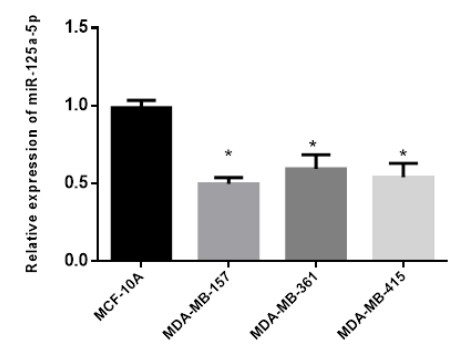









 DownLoad:
DownLoad:
